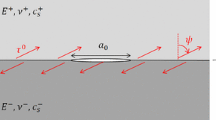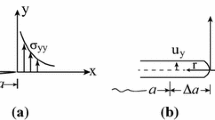Abstract
Crack growth across an interface between materials with different strength is examined by a cohesive zone model. The two materials have identical elastic properties but different fracture process properties, or different yield stresses, which is modeled by different cohesive stresses. The fracture criteria is a critical crack opening displacement. Load is represented by a stress intensity factor defining a remote square root singular stress field. The results show that the ratio between the cohesive stresses of the two materials primarily determines the behavior of the critical stress intensity factor. When the crack approaches a material with a higher cohesive stress the crack tip is shielded, but if the crack approaches a material with smaller critical crack opening displacement the maximum level of shielding is determined by the ratio between the critical crack opening displacements. When a crack approaches a material with a lower cohesive stress it is exposed to an amplified load.
Similar content being viewed by others
Author information
Authors and Affiliations
Rights and permissions
About this article
Cite this article
Wäppling, D., Gunnars, J. & Stâhle, P. Crack Growth Across a Strength Mismatched Bimaterial Interface. International Journal of Fracture 89, 223–243 (1998). https://doi.org/10.1023/A:1007493028039
Issue Date:
DOI: https://doi.org/10.1023/A:1007493028039




